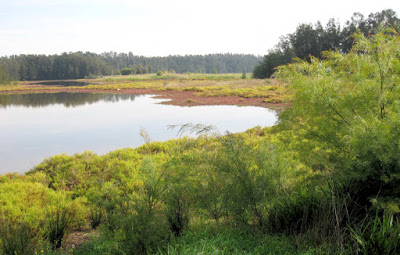About half way along River Road Emu Plains, is the Penrith Regional Gallery (below). This was once a small rural property that became the home of artists Margo and Gerald Lewers. Their daughters donated the site, buildings and gardens along with an art collection to Penrith City Council. We stopped here for refreshments at ‘Café at Lewers’, which has a pleasant outlook of the cottage garden.
 |
| Lewers Gallery Emu Plains |
The front door of Lewers Gallery and a sculpture by Sonia Farley, made from Banksia wood from the collection at Penrith Regional Gallery & The Lewers Bequest
 |
| Rail bridge over Nepean River, Penrith |
Walk location map
We turned away from Tench Reserve at Jamison Road and walked on to Panthers Leagues Club.
There is a limited bus service from here, see Blue Mountains bus services.
There is also another walk along the river, under the Victoria Bridge (road) and the adjacent 1907 Rail Bridge (see above photo) past the weir reserve. This walk is a short distance from Penrith shopping centre.
Nepean Belle have boat cruises that extend into the Nepean Gorge.




















